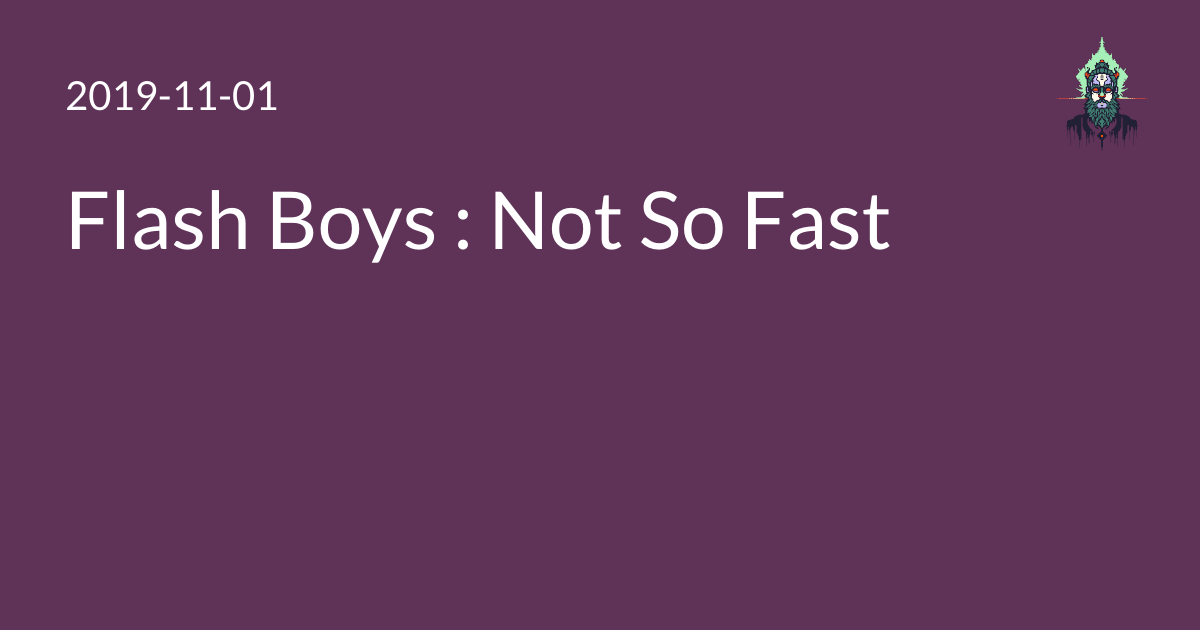Kindle Notebook
Annotations made on a Kindle and exported via Bookcision.
It’s quite interesting when you consider it. The argument is that high-frequency trading is bad, and we can fix this if we eliminate co-location, maker-taker pricing, and Regulation NMS’s best execution requirements. But apparently none of these items are necessary for high-frequency trading. If they were eliminated, high-frequency trading would still exist. The only difference would be that big bank equity traders like Katsuyama and friends would have much lower costs (no co-location necessary, much lower trading fees) and much more discretion in obtaining “best execution” for their clients.
Average compensation is actually well below Wall Street standards – Katsuyama’s salary of $2 million is higher than any total employee compensation package I have ever offered a high-frequency trader. Obviously his “opening bid” of $3 million a year was higher too. A brief conversation with a compensation consultant about high-frequency norms, or perhaps a chat with an employee of a high-frequency firm, would have set Lewis straight on this score.[49] Undoubtedly, employees are well compensated but they could make much more money at Goldman Sachs, or even RBC, they just choose not to work in a big bank. They prefer flip-flops to wingtips, and, in my experience, don’t like to have a chest-thumping alpha male yelling at them. At my former firm, prospective employees weighed offers from other flip-flop friendly companies like Facebook, Google, and other tech companies – and sometimes chose them due to better compensation packages.
Larry Tabb – whose research Lewis quotes in Chapter 1 on the trading value of the Spread Networks fiber-optic line – estimates high-frequency trading in U.S. stocks will generate $1.3 billion in total revenue in 2014, down from a peak of $7.3 billion in 2009.[52] Rosenblatt Securities estimates annual profits to be about $1 billion in 2013, down from a peak of $5 billion in 2009.[53]
Goldman Sachs pays more in bonuses every year than the entire high-frequency trading industry has made in the past three years.
Which brings us, full circle, back to where we started with dark pools. The Chipotle example didn’t rely on high-frequency pinging, “detectable patterns,” or orders held hostage. It did involve sending an order to Goldman Sachs’ dark pool without any assurances about whether or not Goldman’s proprietary trading group would have special access to the order. Rich Gates decided to see if there was anything to fear when he set up an arbitrage situation and dropped it into the lap of Goldman Sachs. Based on what Lewis wrote, it sounds like he found out.
How then is a retail order “valuable”? It’s not. It’s only valuable in that a professional order is “toxic” – that’s actually the industry term for directional orders — and a retail order is not. A market-maker is likely to lose money when a professional takes their liquidity. A market-maker has at least a fifty-fifty chance if a retail order takes their liquidity. The value of a retail stock order to a market-maker is simply that he’s not guaranteed to lose money.
What are those interests anyway? Why do some hedge funds have a problem with high-frequency trading when the Vanguards of the world do not? The answer is that Vanguard doesn’t day-trade, and those hedge funds do. Companies like Vanguard invest for the long-term and prize efficient markets, which improve the performance of their long-term investments. Most hedge funds, on the other hand, make their money by trying to trade small, fleeting opportunities in the markets. If this sounds similar to what high-frequency trading firms do, that’s not a coincidence.
There’s one other reason for Goldman to like IEX. With IEX, banks get a free, private dark pool. Katsuyama calls it “free internalization” in the quote above. A cynic would call it “washing their hands.” The idea is simple: banks can still trade against their customer orders, but instead of doing it inside their own dark pool – which, understandably, sounds fairly sketchy – they can do it on IEX. With “free internalization,” the banks still get the first look at their customer’s orders on IEX, even if other brokers were ahead of them in the queue. The banks can still internalize the orders, but now it looks external. Best of all, it’s free, and they can bask in the good press coverage. The catch is that if the bank chooses not to trade against their customer order, they can’t sell it off to the next guy in the payment-for-order-flow cascade – instead, everyone else (in the dark pool at least) has a shot at filling the order.

